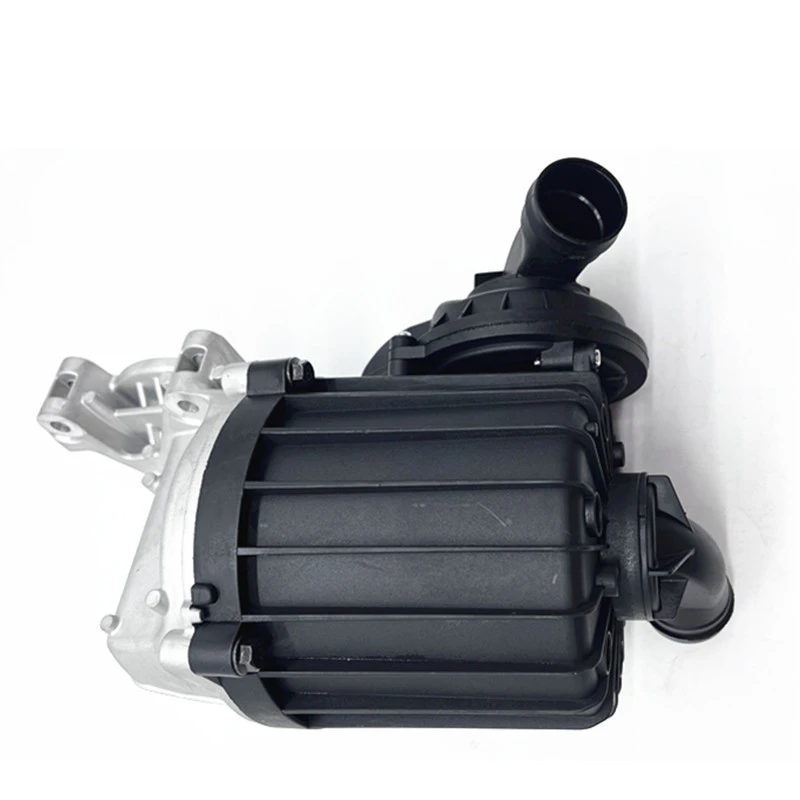에어 오일 분리기란 무엇인가요?
7월 22, 2025
산업 기계 및 내연 기관의 세계에서 공기 유분 분리기는 필수적이지만 간혹 무시되는 역할을 수행합니다. 압축 공기 또는 엔진 크랭크 케이스 환기에서 오일 미스트 제거와 관련하여 공기 오일 분리기는 깨끗한 작동뿐만 아니라 최소한의 배출과 장비 수명 연장을 보장하는 구성 요소입니다.
우리는 이러한 문제에 대해 주로 우려하는 엔지니어, 기계공 및 유지 보수 전문가가이 부품의 비활성화, 사용법 및 획득 방법에 대한 분석을 포함하는 기사의 도움을 받아 공기 오일 분리기를 소개합니다.

공기 유분 분리기는 어떤 기능을 하나요?
공기 오일 분리기는 일반적으로 압축기나 터보차저 엔진과 같이 가압 공기 또는 가스가 생성되는 시스템에 설치됩니다. 주요 목적은 공기가 재순환되거나 배출되기 전에 공기에서 오일을 분리하는 것입니다. 이 과정이 없으면 오일 오염으로 인해 필터가 막히고 효율성이 떨어지며 부품이 마모될 수 있습니다.
엔진 시스템에서 엔진 오일 분리기는 종종 크랭크케이스 환기 시스템에 통합되어 유증기가 흡기 매니폴드나 대기로 유입되는 것을 방지합니다. 이러한 분리기는 원심 분리, 결합 또는 필터 매체 기술을 사용하여 작동합니다.
에어 오일 분리기는 어디에 사용되나요?
공기 오일 분리기는 다음과 같은 여러 산업과 기계에서 사용됩니다:
- 산업 시설의 공기 압축기
- 디젤 엔진 및 대형 트럭
- 항공기 터빈 시스템
- 오일이 함유된 배기 장치가 있는 유압 시스템
- 크랭크케이스 환기 기능이 있는 터보차저 엔진
오일 분리기는 일반적으로 냉동 및 공조 시스템에 사용됩니다, 엔진 오일 분리기 는 고온, 고압의 엔진 환경에 맞게 설계되었습니다. 두 시스템의 성능은 오일 손실을 줄이고 시스템 균형을 유지하는 데 매우 중요합니다.
연료 솔레노이드 밸브는 어떻게 작동하나요?
공기 오일 분리기는 공기의 순도를 제어하는 데 사용되며 연료 솔레노이드 밸브는 연료의 방출을 제어하는 데 사용됩니다. 이를 통해 더 깨끗한 연소와 효율을 높일 수 있습니다. 전기 신호에 따라 솔레노이드 밸브가 켜지고 꺼지므로 연료가 필요할 때만 엔진이나 버너에 분사됩니다.
디젤 발전기를 예로 들어 보겠습니다. 오일 분리기를 통해 크랭크케이스 가스에서 오일 미스트가 압출되고 연료 솔레노이드 밸브는 연료의 흐름이 엔진에 맞는 수준으로 조절되도록 합니다. 이 전체 프로세스는 에너지 절약에 큰 역할을 할 뿐만 아니라 배기가스 저감의 원인이 되므로 시스템 무결성에도 기여합니다.
공기 유분 분리기 사용의 주요 이점
- 더 깨끗한 공기 흐름: 오일이 공기 필터나 연소실에 도달하는 것을 방지합니다.
- 석유 소비량 감소: 재순환을 위한 오일 미스트 캡처
- 기계 수명 향상: 마모 및 오염 감소
- 배출량 감소: 환경 표준 준수
- 유지보수 비용 절감: 필터 및 다운스트림 구성 요소를 더 깨끗하게 유지합니다.
올바른 구분 기호를 선택하는 방법
에어 오일 분리기를 선택할 때는 다음 사항을 고려하세요:
- 시스템 압력 및 작동 온도
- 오일 유형 및 점도
- 설치 방향 (세로 또는 가로)
- 필터링 효율성 (일반적으로 99.9%+)
- 소재 내구성 고온 또는 부식성 환경에서의 사용
시스템에 적합한 분리기를 선택하면 최적의 성능과 수명을 보장할 수 있습니다. 다음과 같은 고품질 구성 요소와 함께 사용하면 연료 솔레노이드 밸브그 결과 안정적이고 반응이 빠르며 깔끔하게 작동하는 기계가 탄생했습니다.
신유황 무역: 산업 부품의 안정적인 공급
신유황무역은 엔진 오일 분리기, 연료 솔레노이드 밸브 및 다양한 부품과 같은 신뢰할 수 있는 부품을 전문적으로 공급하고 있습니다. 오일 분리기 엔진, HVAC 시스템 및 산업 기계에 사용됩니다. 고성능 시스템에서 내구성, 정밀성, 호환성의 중요성을 잘 알고 있습니다.
DHL의 제품은 품질 테스트를 거치고 국제 표준을 충족하도록 설계되어 OEM, 수리 시설 및 애프터마켓 유통 네트워크를 지원합니다. DHL은 글로벌 배송 역량과 기술 지원을 통해 중공업부터 운송, 농업에 이르기까지 모든 분야에서 고객이 효율성을 유지할 수 있도록 지원합니다.



